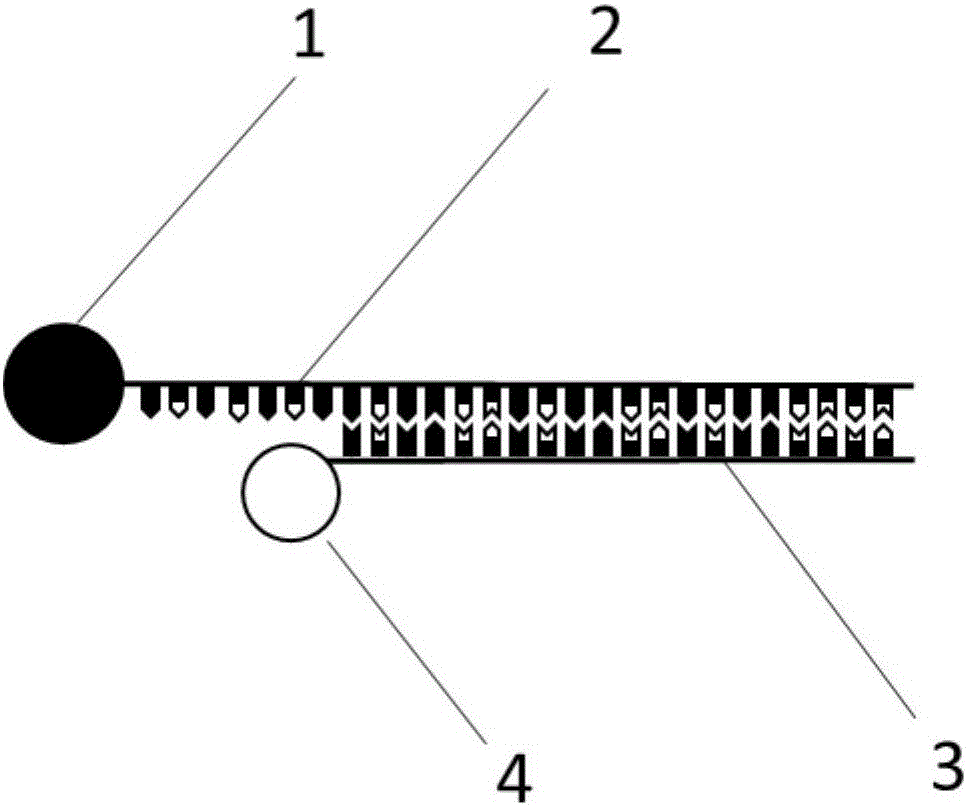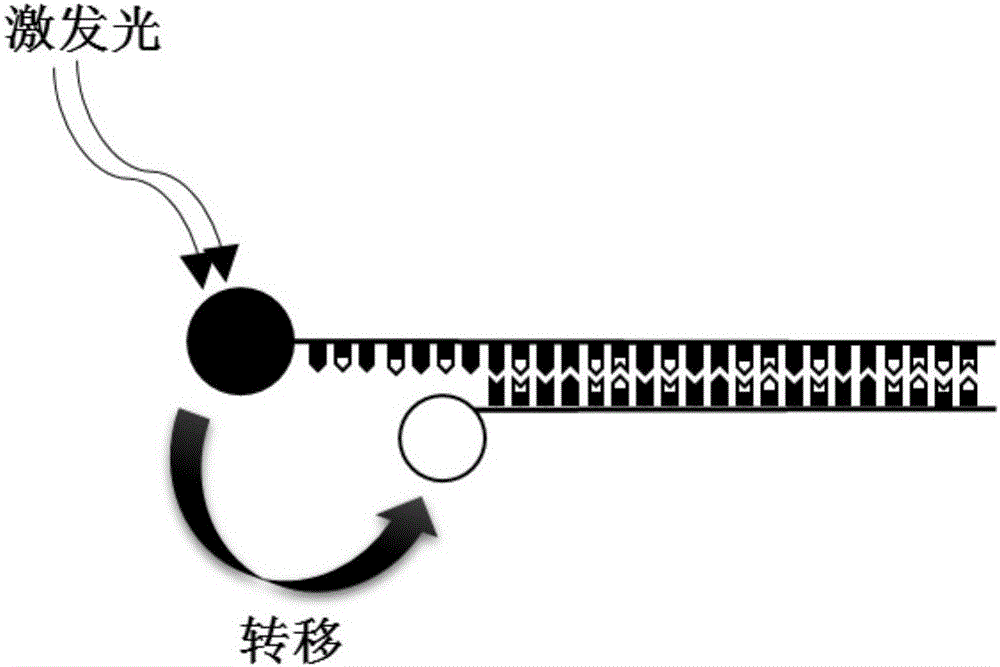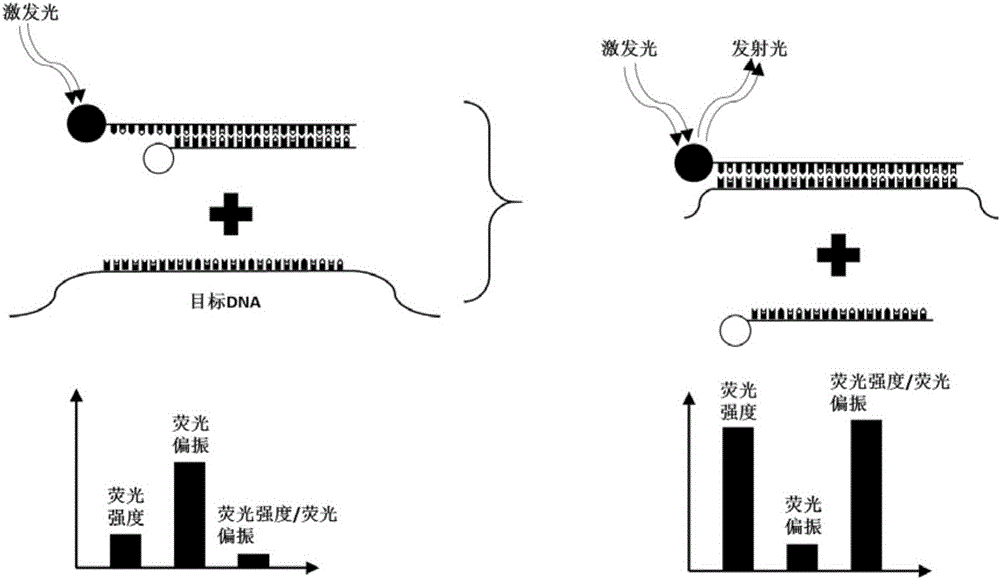Nanometer probe for testing DNA through combination of fluorescence intensity and fluorescence polarization
A nano-probe and fluorescence polarization technology, which is applied in the field of nano-probes, can solve the problems of high requirements for fluorescence photon detection instruments, complex cell nucleus extraction and other pretreatment processes, and achieve high-sensitivity detection effects
- Summary
- Abstract
- Description
- Claims
- Application Information
AI Technical Summary
Problems solved by technology
Method used
Image
Examples
Embodiment 1
[0021] (1) Preparation of raw materials
[0022] Modified a streptavidin on the periphery of the fluorescent protein Alexa Fluor 488 (excitation wavelength 488nm, emission wavelength 519nm);
[0023] The number of gold nanoparticles is 5-10 times the number of total binding sites of streptavidin; one streptavidin has 3 available binding sites, so the number of gold nanoparticles is 5-10 times that of streptavidin 15-30 times of prime, get 160pmol of nano-gold particle in the test, the diameter of nano-gold particle is 2nm.
[0024] Synthetic reporter probes and capture probes were designed, and the synthesized probe sequences for the survivin gene are shown in Table 1. Wherein, the underlined part in the reporter probe represents the unpaired base at the end of the reporter probe, setting 2-3 unpaired bases at the end of the reporter probe can enhance the efficiency of competitive coupling; The underlined part is the targeting sequence region.
[0025] Table 1: Probe sequen...
PUM
 Login to View More
Login to View More Abstract
Description
Claims
Application Information
 Login to View More
Login to View More - R&D
- Intellectual Property
- Life Sciences
- Materials
- Tech Scout
- Unparalleled Data Quality
- Higher Quality Content
- 60% Fewer Hallucinations
Browse by: Latest US Patents, China's latest patents, Technical Efficacy Thesaurus, Application Domain, Technology Topic, Popular Technical Reports.
© 2025 PatSnap. All rights reserved.Legal|Privacy policy|Modern Slavery Act Transparency Statement|Sitemap|About US| Contact US: help@patsnap.com



